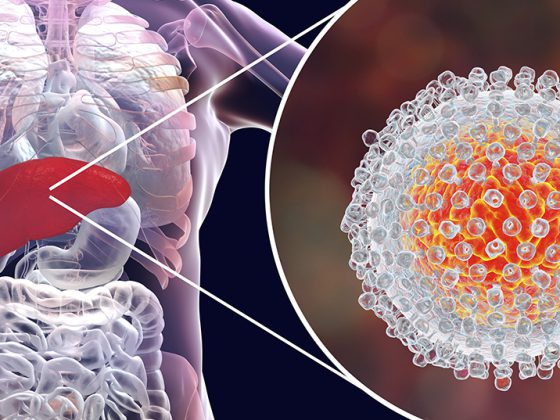Patients often feel depressed and lack energy, are overworked and dissatisfied, suffer from anxiety and physical reactions such as dizziness, palpitations or pain. It is not always easy to decide whether a disease is present, whether self-help is possible, or whether a referral to a specialist is necessary.
According to Dietmar Hansch, MD, head of the anxiety disorders focus at the Hohenegg Private Clinic in Meilen on Lake Zurich, understanding is very important in the treatment of anxiety disorders. Understanding alone reduces anxiety, so psychoeducation is of great importance. He sees opportunities for progress above all in better integrating the therapeutic approaches of behavior therapy, acceptance and commitment therapy, and systems theory, thus endowing psychoeducation with more plausibility, coherence, and catchiness. Exposure therapy with virtual reality, which is now also quite feasible via apps, also offers a lot of potential. In uncomplicated cases and using self-help options, the general practitioner or internist working in gastroenterology or cardiology could also try to treat anxiety independently or, if necessary, refer the patient to a specialist [1].
Differential diagnostic considerations
Anxiety disorders are often very intense and associated with physical symptoms, called anxiety-associated body symptoms. These can appear in cardiac form, such as tachycardia, extrasystoles, or chest pain, which can also indicate angina pectoris in terms of differential diagnosis. However, they may also occur in gastrointestinal form, such as nausea and irritable bowel syndrome symptoms, or neurological symptoms may occur, such as headache, dizziness, lightheadedness, visual disturbances, and paresthesias. If no organic findings can be identified for these symptoms, an anxiety disorder should be considered.
In addition, there are also normal anxieties that may fluctuate briefly into the pathological range. Thirty percent of all adults have a panic attack at some point in their lives, but it doesn’t have to lead to anxiety disorder. Concomitant anxiety can also occur in patients with physical or mental illness. These so-called progressive fears are not, however, an anxiety disorder in the narrower sense, since they usually disappear again after the cause has subsided. Anxiety disorders are present when anxiety takes on a life of its own. This is the case when, even after the causes have subsided and a relaxed situation has been established, the anxiety symptoms become the content of the anxiety and cause suffering. With a lifetime prevalence of between 14 and 19 percent, anxiety disorders are among the most common mental disorders and illnesses of all.
Panic disorder
Panic disorder is an intensely building anxiety in which the stress response is cranked up to the maximum. If palpitations or an irregular heartbeat suddenly occur outside of the coherence of everyday life, this arouses thoughts of disaster. Hyperventilation causes neurological phenomena such as feelings of dizziness, unsteadiness, fainting or lightheadedness. The consequences are, a maximum boost to the cardiovascular system, there is a feeling of shortness of breath, choking sensations, tightness in the throat, pressure or tightness in the chest, nausea or abdominal discomfort. These symptoms build up within a few minutes, but do not last longer than 25-30 minutes in intense form. Attacks can occur out of the blue, but in the majority of cases, panic disorder is associated with agoraphobia.
Agoraphobia with and without panic disorder
Agoraphobia develops in 50 to 60 percent of panic disorders. In agoraphobia with panic disorder, in addition to the panic attacks described above, there is a fear of places where escape would be difficult or would cause embarrassment if a panic attack were to occur. Anxiety attacks are most common in crowds, on public transportation, or in confined spaces, such as elevators. Fear of being alone is also common, with the presence of companions reducing anxiety.
Generalized anxiety disorder
Generalized anxiety disorder is particularly common in older age and is one of the most common anxiety disorders in the elderly. It is therefore not easy to distinguish from depression. Patients suffer from the physical expressions of anxiety, such as tremors, rapid heartbeat, dizziness, nausea, and muscle tension, as well as concentration problems, nervousness, sleep disturbances, and other psychological symptoms. In contrast to panic disorder, however, these symptoms do not occur as intensely and not simultaneously in the form of an attack, but in alternating combination as a subliminal continuous state. Often there is a constant worrying regarding changing topics. In addition, patients usually worry about the permanent worrying and its uncontrollability. This is why we also speak of the so-called “worry sickness”. Generalized anxiety disorder can be differentiated from depression by questioning what the worries are directed at. If they refer to the future, it is more of an anxiety disorder; if the negative thoughts refer more to the past or to losses, this speaks for a depression.
Social phobia and specific isolated phobia
In social phobia, patients are afraid of situations in which they are the center of attention. For example, they are afraid of speaking in public, of superiors, visits to authorities, contacts with the opposite sex and other situations. In doing so, they fear embarrassment, awkwardness, or being judged negatively. In distinction to agoraphobia, the agoraphobic would, for example, always sit near the exit in the cinema in order to be able to escape quickly, whereas the social phobic sits in a dark corner where he is little noticed, but which may well be far away from the exit.
In specific isolated phobia, the phobia is limited to individually circumscribed situations, usually related to conditions in nature, such as cat phobia, blood phobia, or fear of heights. These phobias do not surface as often in practice because patients learn to avoid these fears.
Development of anxiety disorders
At the beginning of anxiety disorders there are often dispositions or early imprints. However, anxiety can also be genetic, so some people are naturally more anxious. Even in kindergarten groups, one-third of children are anxious and introverted, one-third are very extroverted and somewhat aggressive, and another third are generally in between. In addition to this so-called basic imprinting, many other factors can also play a role. For example, young women with low blood pressure are often overrepresented because they more often enter precollaptive circulatory states in which palpitations or palpitations are compensatory. People who have a high introspective sensitivity, i.e. who feel their own heartbeat very clearly, are also more predisposed to develop a panic disorder. Trauma also plays a role, as do parenting factors, such as overproductive parenting behavior by parents or model learning by parents.
These factors may lead to the likelihood of contributing to an anxiety disorder under appropriate follow-up conditions, or to other mental health conditions that increase this likelihood. In the weeks and months before the onset of a mental illness, periods of chronic dysstress also often occur. Then acute critical events can become triggers or companions and set in motion escalation mechanisms in which anxiety brings its own symptoms into focus. A vicious cycle of anticipatory anxiety, thousand-foot blockade, and eventual avoidance behavior ensues. Sensitivity increases and leads to chronicity mechanisms from which panic disorder, phobia, or generalized anxiety disorder develops, depending on predisposition or trigger situation.
The fear network and its positive reconditioning
A chronification structure that forms in long-term memory when anxiety-associated symptoms, sensations, or situational moments repeatedly occur and are combined with anxiety thoughts or catastrophic thoughts is the fear network. This so-called conditioning learning persists despite cognitive insight and can only be overwritten by positive reconditioning. An important moment of cognitive therapy is to contrast these catastrophic concepts with normalizing to positive thoughts and images that lead to neutral to positive feelings. This process is also called framing, in which patients practice distancing themselves from fear in everyday life and overwriting the fear web through positive reframing.
Guiding diagnostic questions and basic principles of treatment
Guiding diagnostic questions for panic disorder or agoraphobia include questions such as, “Do you have sudden attacks of fear and anxiety, suffering from symptoms such as rapid heartbeat, trembling, sweating, shortness of breath, fear of death, and others?” Or, “Do you experience fear or feelings of anxiety in the following situations: crowds, confined spaces, public transportation? Do you avoid these situations out of fear?”
Otherwise, general measures are the first step for mental disorders and anxiety disorders. This includes stress and strain reduction, exercise, sleep, intensifying relationships, pursuing hobbies, and anything that conveys positive feelings and counterbalances negative feelings. In addition, to understand the mechanisms of conditioning principles, education on background knowledge of the psyche, anxiety disorders, and the principles of self-treatment and psychoeducation should follow. Furthermore, paradoxical and cognitive techniques, such as reframing, are part of the treatment. Various forms of exposure in sensu, so-called imagination exercises in virtuo with corresponding imagination exercises and apps, or in vivo in relation to body symptoms and external situations. Or medications, such as SSRIs like escitalopram which, precisely because they can cause side effects like agitation in anxiety patients or increase anxiety symptoms, need to be phased in slowly at half the dose. Or benzodiazepines in the acute situation for short term use. In addition, a variety of self-help materials are available that primary care physicians or internists can give to patients, such as self-help books (Managing Anxiety Yourself, Managing Panic and Claustrophobia Yourself, Successfully Fighting Depression and Anxiety), audiobooks, or apps (Invirto).
Source: Dietmar Hansch, MD: Anxiety Disorders – Therapeutic Approaches for Practice, lecture VZI Symposium 2022, Jan. 27, 2022.
HAUSARZT PRAXIS 2022; 17(2): 20-21
InFo NEUROLOGY & PSYCHIATRY 2022; 20(2): 34-35.










